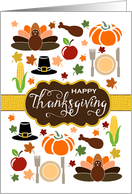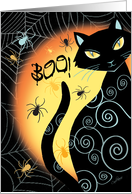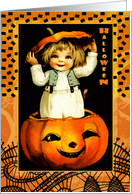New Year: Some Fascinating Facts
 | While the turning of the old year to the new year was celebrated as far back in human history as ancient Babylon, it took the famous Roman, Julius Caesar, and his reconciliation of the calendar to appoint January 1 as New Year’s Day — thus deeming December 31 as New Year’s Eve, a night of parties and celebration world-wide in our modern age. Here are a few fascinating facts about New Year’s Eve and New Year’s Day to mull over before the end of 2014. The very first celebration of New Year’s Eve in New York City’s Times Square took place in 1904—a huge, street-wide party to celebrate the opening Click to Read more… |
5 Frosty Facts About the Snowman
 | A favorite winter activity around the world is making a snowman (or snow woman)! From simple stacked balls with a carrot nose and coal eyes to much more elaborate and artistic sculptures, the snowman is instantly recognizable no matter the country or culture. Here’s more about the snowman’s surprisingly long history. So far the first written evidence of a snowman comes from a margin drawing in a Book of Hours, an illuminated manuscript from 1380 currently located in the Royal Library of The Hague, Netherlands. The snowman has been a popular symbol of the Christmas holidays for a long time, particularly in advertising and retail products including a snow cone Click to Read more… |
Terrific Twisted Facts About Candy Canes
 | The red-and-white striped candy cane has become a potent symbol of Christmas, but the sugar confection is surrounded by a confusion of legend and historical evidence. Here are some of the truths and myths regarding this favourite seasonal treat. LEGEND: The candy cane was invented by a 19th century candy maker in Illinois to symbolize the birth of Christ (white) and the scourging and crucifixion (red). LEGEND: A late 17th century German choirmaster invented the candy cane to help keep the children in his choir occupied during services. The crook-shape of the stick was a symbol of Christ in His role as shepherd. These folklore tales may be charming, but Click to Read more… |
Time to Kick the Habit!
 | The Great American Smokeout® sponsored by the American Cancer Society occurs annually on the third Thursday of November. In 2014, the event will take place on November 20th around the country. Addiction to tobacco products by one in five Americans is a major contributor to life-threatening diseases like cancer. Quitting smoking cigarettes, cigars and pipes decreases the chance of illness and preventable death, and increases overall health. Since smokers are much more likely to quit if they’re given encouragement, the Great American Smokeout® offers a chance to participate in support programs, telephone hotlines and special events held by many organizations. At the very least, it’s hoped that if a smoker Click to Read more… |
All the Trimmings: The Thanksgiving Turkey
 | Thanksgiving in the United States, declared a national holiday in 1863 by President Abraham Lincoln, is celebrated annually on the fourth Thursday in November. Traditionally, Americans sit down to a feast featuring turkey (or another protein), stuffing, side dishes such as mashed potatoes, gravy, sweet potato, corn, etc., and often enjoy pumpkin pie for dessert. These days, turkeys have been bred and reared to provide as much breast meat as possible. Our ancestors, however, hunted wild turkeys for the dinner table. The turkey is native to the American continent, so when early European travelers encountered this strange new species, they quickly adapted it as the fowl of choice for holiday Click to Read more… |
Cat-Astrophic Halloween
 | When witches go riding, and black cats are seen, the moon laughs and whispers, ‘tis near Halloween. —Author Unknown On National Cat Day, we ask: why are black cats in ;articular associated with Halloween (October 31)? A midnight-furred kitty, yellow eyed, spiky, back arched and howling, has become a highly visible and immediately identifiable Halloween symbol. While felines have been objects of superstition for thousands of years, what’s the connection with the spookiest holiday of the year? Black: The color black is, in many cultures, symbolic of death, darkness and/or evil. Humans fear the unknown because the dark hides unseen dangers. Nocturnal: Cats are nocturnal predators, hunting prey once darkness Click to Read more… |
A Very Vintage Victorian Halloween
 | Apples hanging in a row, Flaming candles all aglow. Witches flying everywhere, Magic music in the air. There’ll be mischief now I ween On this mystic Hallowe’en! —Anonymous, 19th century Halloween card In America in the 19th century, October 32, the night of Halloween or All Hallows Eve, was a young person’s holiday centering around parties and games rather than trick or treating. Beyond bobbing for apples, they used their imaginations. Here are five Victorian parlor games for Halloween that are unusual and scary fun for all the boys and ghouls. Spearing Apples Apples are set afloat in a tub of water. Guests attempt to spear an apple by holding Click to Read more… |
National Pasta Day
 | October 17 is National Pasta Day in the United States, where the average consumer munches through nearly 9 pounds of pasta per year. With a variety of pasta shapes and lots of choices for sauces, pasta is considered a culinary staple as well as nutritious and delicious. While a popular myth has the explorer Marco Polo bringing pasta to Italy after his legendary voyage to China, the truth is somewhat less fantastic. In 1296, for example, before Polo’s return, a trade in obra de pasta was already well established in Sardinia. So who invented pasta? We don’t know, but we’re glad they did. Greeting Card Universe celebrates National Pasta Day Click to Read more… |
National Breast Cancer Awareness Month
 | October is National Breast Cancer Awareness Month. According to Breastcancer.org, every year, one in eight women living in the U.S. will receive a diagnosis of breast cancer. The statistics means most women are either diagnosed with cancer themselves at some point in their lives, or know someone who has cancer. Medical science has come a long way since a cancer diagnosis was an automatic death sentence. Survival rates for patients diagnosed with Stage I breast cancer have risen to ninety percent. Knowing what to do for a cancer patient is difficult, especially when you’re close to them. Family and friends can be afraid to get in touch because they don’t Click to Read more… |

